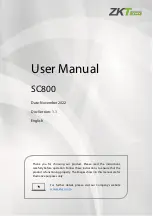
Rev. 1.20
1�0
�an�a�� 2�� 201�
Rev. 1.20
1�1
�an�a�� 2�� 201�
BS82B12A-3/BS82C16A-3/BS82D20A-3
Touch Key 8-Bit Flash MCU with LED/LCD Driver
BS82B12A-3/BS82C16A-3/BS82D20A-3
Touch Key 8-Bit Flash MCU with LED/LCD Driver
Noise Error – NF Flag
Over-sampling is used for data recovery to identify valid incoming data and noise. If noise is
detected within a frame the following will occur:
• The read only noise flag, NF, in the USR register will be set on the rising edge of the RXIF bit.
• Data will be transferred from the Shift register to the RXR register.
• No interrupt will be generated. However this bit rises at the same time as the RXIF bit which
itself generates an interrupt.
Note that the NF flag is reset by a USR register read operation followed by an RXR register read
operation.
Framing Error – FERR Flag
The read only framing error flag, FERR, in the USR register, is set if a zero is detected instead of
stop bits. If two stop bits are selected, only the first stop bit is detected, it must be high. If the first
stop bit is low, the FERR flag will be set. The FERR flag is buffered along with the received data
and is cleared on any reset.
Parity Error – PERR Flag
The read only parity error flag, PERR, in the USR register, is set if the parity of the received word is
incorrect. This error flag is only applicable if the parity is enabled, PREN bit is "1", and if the parity
type, odd or even is selected. The read only PERR flag is buffered along with the received data
bytes. It is cleared on any reset. It should be noted that the FERR and PERR flags are buffered along
with the corresponding word and should be read before reading the data word.
UART Module Interrupt Structure
Several individual UART conditions can generate a UART interrupt. When these conditions exist,
a low pulse will be generated to get the attention of the microcontroller. These conditions are a
transmitter data register empty, transmitter idle, receiver data available, receiver overrun, address
detect and an RX pin wake-up. When any of these conditions are created, if its corresponding
interrupt control is enabled and the stack is not full, the program will jump to its corresponding
interrupt vector where it can be serviced before returning to the main program. Four of these
conditions have the corresponding USR register flags which will generate a UART interrupt if its
associated interrupt enable control bit in the UCR2 register is set. The two transmitter interrupt
conditions have their own corresponding enable control bits, while the two receiver interrupt
conditions have a shared enable control bit. These enable bits can be used to mask out individual
UART interrupt sources.
The address detect condition, which is also a UART interrupt source, does not have an associated
flag, but will generate a UART interrupt when an address detect condition occurs if its function
is enabled by setting the ADDEN bit in the UCR2 register. An RX pin wake-up, which is also a
UART interrupt source, does not have an associated flag, but will generate a UART interrupt if the
microcontroller is woken up from IDLE0 or SLEEP mode by a falling edge on the RX pin, if the
WAKE and RIE bits in the UCR
2
register are set. Note that in the event of an RX wake-up interrupt
occurring, there will be a certain period of delay, commonly known as the System Start-up Time, for
the oscillator to restart and stabilize before the system resumes normal operation.
















































